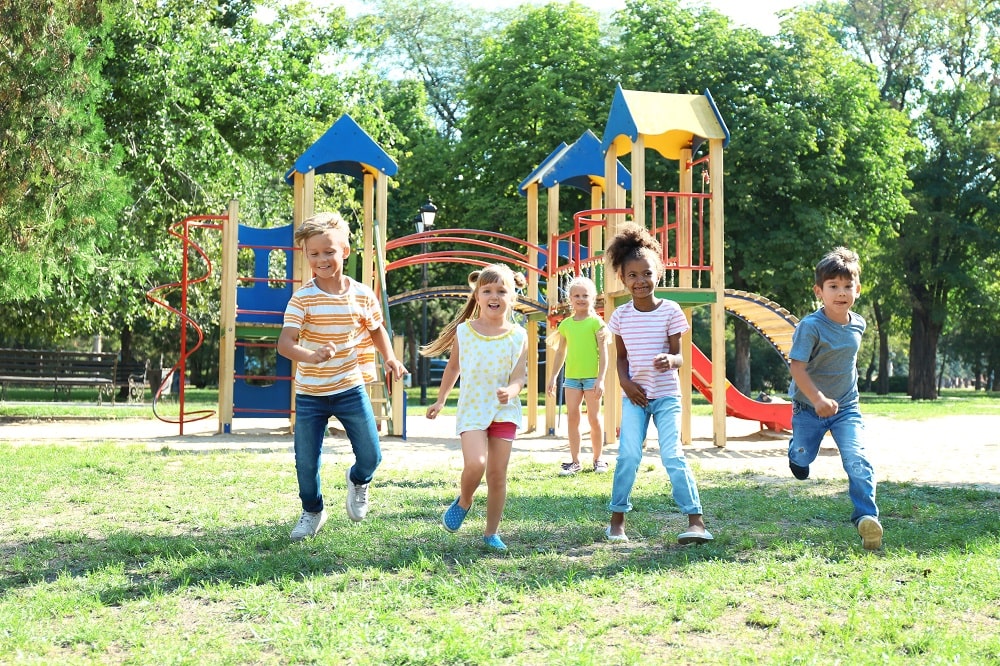Playgrounds hold an enchanting allure for children, providing them a world of outdoor exploration, laughter, and friendships. However, alongside the joys lie potential dangers, and every year, countless children under the age of 14 end up in hospital emergency rooms due to playground injuries. As guardians, we are responsible for creating safer playground environments for our little adventurers. This article will delve into the crucial aspects of playground safety guidelines, empowering parents and caregivers to protect their children’s happiness while they play safely.
Understanding Playground Injuries
Playground injuries vary from minor scrapes and bruises to more severe incidents, such as broken bones, sprains, internal organ injuries, dislocations, and concussions. Regrettably, a few cases have even resulted in fatalities. Swings and climbing equipment in public playgrounds are frequent sites of accidents, while home playgrounds have seen the most playground-related deaths.
Identifying Common Causes of Playground Injuries
Falls rank as the primary cause of playground injuries. Slippery or unstable surfaces and loss of balance during activities on monkey bars, swings, slides, and see-saws contribute to many falls. Experienced personal injury lawyers in Denver have also seen cases in which entanglement hazards, such as drawstrings on clothing, causes falls and injuries. Slides are another major culprit, with young children’s shinbone fractures often resulting from riding on an adult’s lap. Poorly maintained equipment, sharp edges, and substandard ground surfaces also play a role in playground injuries.
The Power of Supervision in Preventing Injuries
Close supervision remains the most effective measure to prevent playground injuries. Responsible adults should offer focused attention, teach children proper equipment usage, and enforce playground rules. Regular inspections to identify potential hazards and promptly report issues to relevant authorities is essential. It is equally important to direct children to equipment suitable for their age group and allocate separate areas for different age groups to avoid overcrowding.
Designing Playgrounds with Safety in Mind
A well-designed playground can significantly reduce the risk of injuries. Consider three critical factors when planning how to design a safe playground:
Playground Surface
The choice of surface can greatly impact fall-related injuries. Opt for softer surfaces, such as wood mulch, shredded tires, or sand, which cushion falls and minimize harm. Avoid hard surfaces like asphalt and concrete, as they pose higher risks.
Playground Plan
Plan the playground layout to cater to various physical and perceptual activities, encouraging running, climbing, swinging, and more. Separate active and quiet play areas, clear sight lines for adult supervision, and designated use zones around equipment contribute to safer environments.
Equipment Installation and Maintenance
Regularly inspect and maintain playground equipment to prevent accidents. Follow manufacturer installation guidelines carefully, and watch for signs of wear, rust, or deterioration.
Essential Playground Safety Guidelines
Active Supervision
Always keep a watchful eye on children at the playground, ensuring they have unobstructed views from their height.
Surface Selection
Choose playgrounds with wood chips, mulch, or shredded rubber surfaces for equipment up to 7 feet high, avoiding concrete or hard-packed soil.
Appropriate Footwear
Ensure children wear suitable shoes for safe running, climbing, and jumping, and secure shoe laces or Velcro straps.
Age-Appropriate Play
Direct children to equipment designed for their age group, reducing potential risks.
Equipment Safety Check
Test hand grips for easy grasp, opt for plastic or rubber swing seats and avoid equipment with head entrapment risks, it is also important to know the difference of metal vs wood swing set, what materials can best be used, and what are the safest equipment to put up.
Eliminate Hazards
Remove tripping hazards, such as exposed concrete footings, tree stumps, or rocks.
With these comprehensive playground safety measures in place, we can create a world of excitement and joy for our children, knowing they are protected from unnecessary harm. Let’s safeguard their innocence and exuberance, ensuring they can confidently explore and play.

